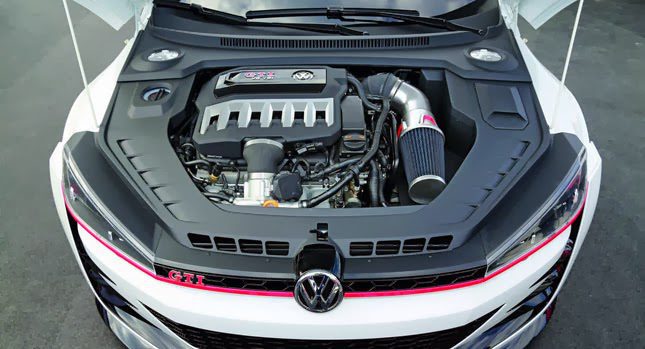Enhance Your Experience with a High-Quality Opel Corsa Engine
Enhance Your Experience with a High-Quality Opel Corsa Engine
Blog Article
Discovering the Inner Workings of a Compact Car's Engine System
As drivers, we usually consider granted the intricate processes that take place within the confines of our lorry's engine system. The portable yet complex equipment that thrusts us onward is a marvel of engineering precision and sychronisation. From the regulated surges in the burning chamber to the thorough timing of fuel shot, every element plays an important role in the smooth procedure of the engine. In this expedition of a small car's engine system, we will certainly unravel the inner operations of this mechanical symphony, clarifying the enigmas that drive us forward on our everyday trips.
Burning Process Introduction
The burning process in a portable car's engine system is an essential device that efficiently transforms gas into energy to power the lorry. This procedure occurs within the combustion chamber of the engine, where gas and air mix, fire up, and generate regulated explosions. The burning procedure consists of 4 primary phases: consumption, power, exhaust, and compression.
During the intake stage, the piston moves downward, pulling in a mixture of air and gas right into the combustion chamber. The next phase, compression, includes the piston relocating up, pressing the air-fuel mixture to raise its effectiveness. Ultimately, in the power phase, the ignition system sparks the compressed combination, resulting in a rapid growth of gases that requires the piston back down. This downward activity creates the power required to drive the car. Finally, in the exhaust stage, the burned gases are removed from the combustion chamber via the exhaust valve, preparing the chamber for the following cycle. This cyclic combustion procedure is fundamental to the operation of a portable car's engine system, ensuring reliable energy conversion for propulsion.
Piston and Cyndrical Tube Interaction

The piston's exact fit within the cylinder is crucial for keeping ideal compression and stopping power loss during burning. Tight clearances between the piston and cyndrical tube walls ensure reliable sealing, permitting the piston to relocate efficiently without enabling gases to leak past. Appropriate lubrication is additionally essential to reduce rubbing and put on in between these elements, boosting long life and performance.
Additionally, the style and products used in producing the piston and cyndrical tube impact engine effectiveness and longevity. Modern engines often use lightweight yet durable materials like aluminum alloys he has a good point for pistons and cyndrical tube liners to decrease inertia and boost thermal effectiveness. In general, the unified communication in between the piston and cyndrical tube is basic to the engine's functionality and total efficiency.
Gas Injection System Capability
Fuel shot systems in portable automobile engines play an essential role in precisely delivering fuel to the burning chamber for controlled and efficient ignition. The gas injection system operates by injecting gas into the combustion chamber at the ideal minute throughout the engine's operation (opel corsa engine). This specific timing ensures that the gas blends equally with the air for correct burning, resulting in improved gas efficiency and lowered discharges
There are largely 2 kinds of fuel shot systems utilized in small lorry engines: port gas injection (PFI) and direct fuel injection (DFI) PFI systems infuse fuel right into the consumption port prior to the intake shutoff, while DFI systems inject gas directly into the combustion chamber. Both systems have their benefits, with DFI supplying much better gas atomization and PFI providing a much more cost-efficient service.
Understanding Engine Air Conditioning Mechanisms
Efficient operation of a compact automobile's engine counts heavily on the efficiency of its cooling mechanisms. The air conditioning system in a small vehicle generally is composed of several elements working together to control the engine temperature level. Recognizing these engine cooling mechanisms is crucial for preserving the efficiency and durability of a portable automobile's engine system.

Exhaust System Parts Explained
The optimal functioning of a small car's engine cooling mechanisms depends on a corresponding system understood as the exhaust system, which makes up various crucial components for ensuring reliable discharges and engine performance. The exhaust manifold accumulates exhaust gases from the engine's courses and cyndrical tubes them to the catalytic converter.
One vital element of the exhaust system is the oxygen sensing unit, which keeps an eye on the oxygen degrees in the exhaust gases to help control gas usage and ensure optimum engine performance. opel corsa engine. Additionally, the resonator might exist in some exhaust systems to decrease noise levels. Generally, the Recommended Site exhaust system plays an essential function in maintaining engine performance, minimizing harmful discharges, and making sure a quieter driving experience for small lorry proprietors

Final Thought
To conclude, the portable car's engine system is a complex combination of elements that collaborate to assist in the combustion process, convert fuel right into energy, and eliminate waste gases. Comprehending the inner operations of the engine system, consisting of the piston and cyndrical tube communication, fuel shot system, engine cooling mechanisms, and Check Out Your URL exhaust system components, is important for maintaining ideal performance and efficiency of the lorry.
The combustion process in a compact vehicle's engine system is an essential mechanism that efficiently transforms gas right into power to power the vehicle.Gas shot systems in portable vehicle engines play a vital role in precisely providing gas to the combustion chamber for efficient and regulated ignition.There are mostly 2 kinds of gas shot systems made use of in portable lorry engines: port gas shot (PFI) and straight fuel shot (DFI) Recognizing these engine air conditioning devices is essential for keeping the efficiency and durability of a portable lorry's engine system.
The optimum functioning of a small vehicle's engine air conditioning devices depends on a corresponding system known as the exhaust system, which makes up numerous essential parts for making certain efficient exhausts and engine performance.
Report this page